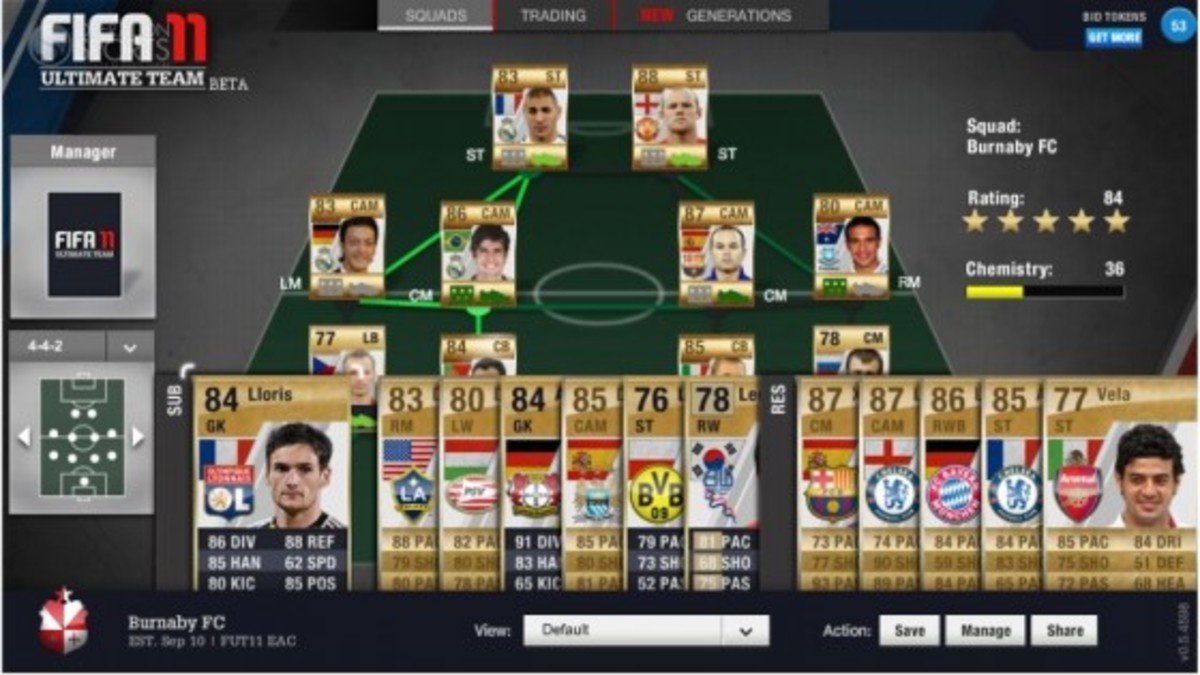How to Make Money by Shorting a Stock
Selling High and Buying Low
Shorting or short selling a stock basically involves the selling of a stock or other financial instrument that you, the seller, do not own. This is legal so long as you both borrow the stock or other financial instrument from the seller with their or their agent's knowledge and consent and then replace the stock or other financial instrument within the time agreed upon.
The short seller pays for this privilege either by paying a fee for the use of the stock or makes some type of rental payment to compensate the owner for the use of their stock.
The short seller's objective is to make money by selling the stock when the price is high and then buying it back at a lower price when the stock price falls.
Long and Short Positions Defined
Shorting or having a short position in a stock is the opposite of what is known as Being Long or having a Long Position in a stock. When we speak of a person having a long position we are referring to the fact that the individual has purchased the stock and is hold it and hoping that it will increase in value so it can be sold at a profit. Whereas having a short position in a stock means that the person has sold a stock which they don't own and are expecting the price to fall so that they can buy the stock back to return to the seller and make a profit on the difference between what they sold it for and what they paid to buy it back.
The goal of either shorting a stock or going long in a stock is the same, namely to make a profit on the difference between the cost of purchasing it and the proceeds from the sale of the stock.
Differences Between Short and Long Positions
The first and most obvious difference between short and long positions is the timing of the purchase and sale of the stock. With a short sale the investor first sells the stock and then buys it back. Short sellers sell sell stock short when they believe that the price of the stock is about to peak and will shortly fall in price. Investors taking a long position, on the other hand, try to purchase a stock whose current price is low and the expectation is that the price will rise soon. This type of investor buys the stock with the expectation that its price will soon rise thereby enabling them to sell it at a profit.
While both short sellers and holders of long positions are both expecting the price to change, albeit in different directions, there is another big difference between short and long positions and that is the amount of capital involved. A short seller does not have to tie up their capital while waiting for the price to change. The short seller simply sells someone else's stock and then has the entire proceeds, minus any fees, at their disposal while waiting for the price to fall. Of course, in order to get the owner of the stock or broker to lend them the stock to sell, the short sell will have to prove that he or she has sufficient net worth to be able to buy back the stock in the event it continues to rise rather than falls.
Those taking a long position, on the other hand, have to come up with the money to purchase the stock and then stand by and wait until the price goes up before they can sell and get their capital back with their profit. Unlike the short seller who has to prove that he or she has sufficient wealth to cover their losses if the stock rises rather than falls, while a person taking a long position only has to come up with sufficient funds for the initial purchase.
In addition to the differences in capital needed to enter into short and long positions, the profit and loss potential of each is different as well. In the case of a short seller, if the price of the stock falls, as expected, the difference between the price the stock was sold at the the price at which the short sell brought it back is almost pure profit as the short seller has not had to pay anything except some small fees in order to make the profit. Short selling can thus be very profitable.
In the case of a long position, the purchaser of the stock has to use his or her own funds or borrow the money to purchase the stock and then wait, with their money tied up in the stock, until the price of the stock rises and he or she can sell at a profit. Since a large amount of money is needed for a long position the percent profit is much smaller.
However, if the price of the stock goes in the opposite direction of what the short seller or holder of a long position expects, the losses can be much greater for the short seller. If the stock price keeps climbing rather than falling the short seller will have to buy it back at a loss at some point. Since conceivably there can be no limit to how high the price can increase, there is potentially no limit to the amount of loss a short seller can face.
The holder of a long position, on the other hand, can lose no more that what he or she paid for the stock. If the price of the stock purchased falls rather than increases, the holder of the long position will lose the difference between what he or she originally paid for it and what they ultimately sold it for. The worst case scenario for a person with a long position would be for the price of the stock to go to zero which would mean that the investor would lose their entire investment. However, the investor cannot lose more than the amount they invested and this provides the investor in a long position with a safety net of sorts.
Limiting a Short Seller's Loss
Short sellers not wanting to risk unlimited losses can hedge their position or insure against losses in excess of a certain amount by purchasing what is known as a put option. As I explained in my Hub entitled Stock Options Explained, a put option is an option to purchase a fixed number of shares of stock at a set price some time in the future.
Thus, a short seller could sell 100 shares of stock at $20 per share and purchase a put option giving them the right to purchase 100 shares of the same stock for say $25 per share any time during the life of the put option. If the price of the stock falls as expected the short seller buys it back at the low price and lets the option expire. Of course a fee has to be paid to the seller of the put option when it is purchase and this is an additional cost which reduces the short seller's potential profit, but, in return, the short seller is able to limit his or her losses to $500 in this example (i.e., the short seller sold 100 shares of stock at $20 per share receiving $2,000 and, regardless of how high the price of the stock goes, with the put the short seller can buy 100 shares to replace what he or she sold, for $25 per share or a total of $2,500 for a gross loss of $500 which is the difference between the sale price and re-purchase price - the net loss will be greater after the cost of the option and fees for borrowing the stock are added in).
How the Market Benefits From Short Selling
Few people like pessimists and short sellers are pessimists in that they believe that the currently booming stock market is going to fall soon. This alone causes many people to look down upon short selling. In addition, corporate managers often feel that short sellers, rather than changes in the economy or poor performance on the part of the managers themselves. However, much as they would like to, short sellers are merely going with the flow rather than directing the flow of the market.
However, while short sellers may not be able to control the market by their actions, they do perform a useful service and that is to help stop or slow a market decline. Markets are driven as much by emotion and feelings as by logic and this is especially true of financial markets, especially stock markets. The result is that when stocks are rising and people see friends and neighbors making money buying stocks they themselves jump in and join the party. As more buyers enter, the prices rise further. However, there are limits to both the potential number of buyers and the amount of positive enthusiasm they are able to generate as a group. As some point some investors will start to panic and feel they have to get out before a crash while some others will become cautious and feel that they should be happy with their profits to date and cash out before their is a fall. Just as an excess of exuberance can drive markets to unsustainable peaks, an excess of fear will cause panic and drive markets in the opposite direction.
In rapidly rising markets short sellers can be a small splash of cold water as they are selling while the masses are buying. If nothing else, their efforts can help slow down the boom and help keep some sanity in the market. Then, when the market does peak and begin falling, the shorts will move in to cover their positions by buying. Here again, their buying when everyone else is selling will have the same effect of helping to slow the fall as their selling when everyone else is buying.
Of course when there is a major buying frenzy or mania like the recent housing and stock market mania of a year or so ago, the actions of shorts in selling are too little to slow it noticeably just as their buying to cover their positions in the free fall that followed was not sufficient to halt the crash. However, except when the markets are going absolutely crazy as they were recently, short sellers can help to prevent or limit both excessive optimism on the way up and excessive pessimism on the way down.











